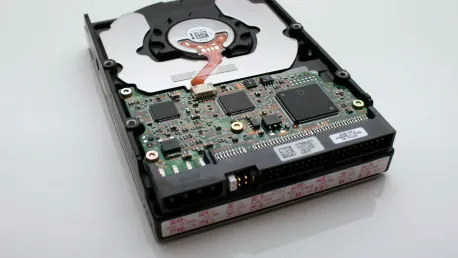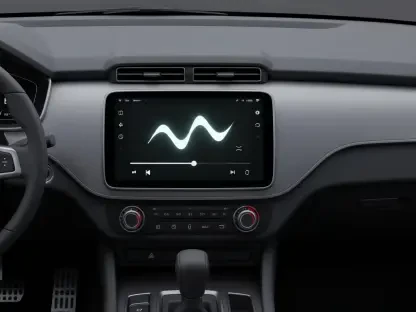Hard disk drives (HDDs) rely on mechanical components, and over time, these parts can wear out or fail, directly affecting the drive’s lifespan. Understanding the age of a hard drive can help in predicting its longevity and planning replacements before a critical failure occurs. Typically, HDDs have a lifespan ranging from 3 to 5 years, although some may last longer depending on their usage and maintenance. For those unsure about how old their hard drive is, especially when dealing with new, previously used, or refurbished drives, methods exist to accurately determine its approximate age. These methods include checking the manufacturer’s label, analyzing the S.M.A.R.T. data, and verifying the warranty status on the manufacturer’s website.
Method 1: Checking the Manufacturer’s Label
Examining the manufacturer’s label on the hard drive is one of the simplest ways to determine its age. Most hard drives come with a label on top that displays several critical pieces of information, such as the brand, model, manufacturing date, serial number, and other technical specifications. This method involves physically inspecting the hard drive, which may require some technical skills, including safely opening the computer case and handling computer components.
To start, ensure the PC is powered down and unplugged. For desktops, a screwdriver may be needed to open the case, while laptops might require removing the back panel or hard drive compartment cover. Once the hard drive is located, check the label for the production date. Subtracting this date from the current year will yield the drive’s age. If the manufacturing date is not explicitly listed, the serial number can be used to find this information on the manufacturer’s website. This straightforward approach provides a reliable estimate of the hard drive’s age and can be useful for regularly monitoring hardware health.
Since the physical inspection can sometimes be cumbersome, alternative methods may be preferred, especially in scenarios where the hard drive is difficult to access. Nonetheless, the manufacturer’s label remains a fundamental method that provides concrete evidence regarding the manufacturing date, crucial for determining the drive’s age accurately.
Method 2: Analyzing S.M.A.R.T. Data
The S.M.A.R.T. (Self-Monitoring, Analysis, and Reporting Technology) feature is built into modern hard drives and solid-state drives (SSDs), monitoring their health, performance, and potential issues. This technology provides a wealth of information that can help estimate a drive’s age, particularly through attributes like Power-On Hours (POH). Power-On Hours is a key attribute in S.M.A.R.T analysis, indicating the total hours the drive has been active, which can be used to approximate its age.
To analyze S.M.A.R.T. data, specialized software tools such as CrystalDiskInfo can be used. Once installed, these tools will display the S.M.A.R.T. data for all detected drives. Focus on the ‘Power On Hours’ attribute, which shows the total running hours of the drive. Dividing this value by 24 gives the number of days the drive has been operational, providing a method to approximate its age. Hovering over the specific data or using software features can often simplify this calculation.
It’s important to note that the ‘Power On Hours’ does not account for days when the drive is powered off, such as weekends or downtime periods; thus, while it offers a good estimate, it might be slightly less precise than the manufacturing date. Nonetheless, S.M.A.R.T. data remains invaluable for assessing hard drive health and estimating its age, playing a crucial role in preventive maintenance and proactive hardware management.
Method 3: Verifying Warranty Status
Another effective approach to determine the age of a hard drive is by verifying its warranty status on the manufacturer’s website. This method is particularly useful when dealing with relatively new or recently purchased drives. By checking the warranty status, users can gain insights into the manufacturing date and overall age of the hard drive based on the warranty period.
To begin, the serial number of the hard drive is required, which can be obtained either by checking the manufacturer’s label or by executing the command wmic diskdrive get model, serialnumber in the Command Prompt. After noting the serial number, visit the manufacturer’s website and input this information into the warranty check tool. The tool will display the warranty status, including whether the drive is still covered or out of warranty. If the drive remains under warranty, this status can help estimate the manufacturing date by cross-referencing the warranty period.
If the drive is out of warranty, the tool might still provide the original warranty period details, assisting in determining the approximate age of the hard drive. This method is convenient, especially for users who prefer not to physically inspect the drive or cannot access it easily. It offers a reliable way to ascertain the drive’s age and ensure the hardware is within its expected lifespan.
Significance of Determining Hard Drive Age
Understanding the age of a hard drive is crucial for various reasons, including planning for replacements, safeguarding data, and ensuring optimal system performance. Older drives are more susceptible to failures, and users must be aware of their drive’s age to preemptively upgrade and avoid unexpected data loss or system downtime. Regular monitoring, combined with the methods discussed, enables users to stay informed about their drive’s health and make informed decisions regarding hardware maintenance.
Conclusion
Hard disk drives (HDDs) depend heavily on mechanical components, which may wear out or fail over time, thereby impacting the overall lifespan of the drives. Being aware of a hard drive’s age is crucial for predicting its longevity and facilitating timely replacements before any significant malfunction. Generally, HDDs are known to last between 3 to 5 years, although their longevity can extend beyond this range, depending on their usage and upkeep. For those uncertain of their hard drive’s age, especially when dealing with new purchases, used, or refurbished drives, several reliable methods exist to estimate its age. These techniques include examining the manufacturer’s label, scrutinizing the S.M.A.R.T. data, and checking the warranty status on the manufacturer’s website. Proper assessment can ensure efficient planning for upgrades and mitigate the risks of unexpected data loss due to drive failure.









